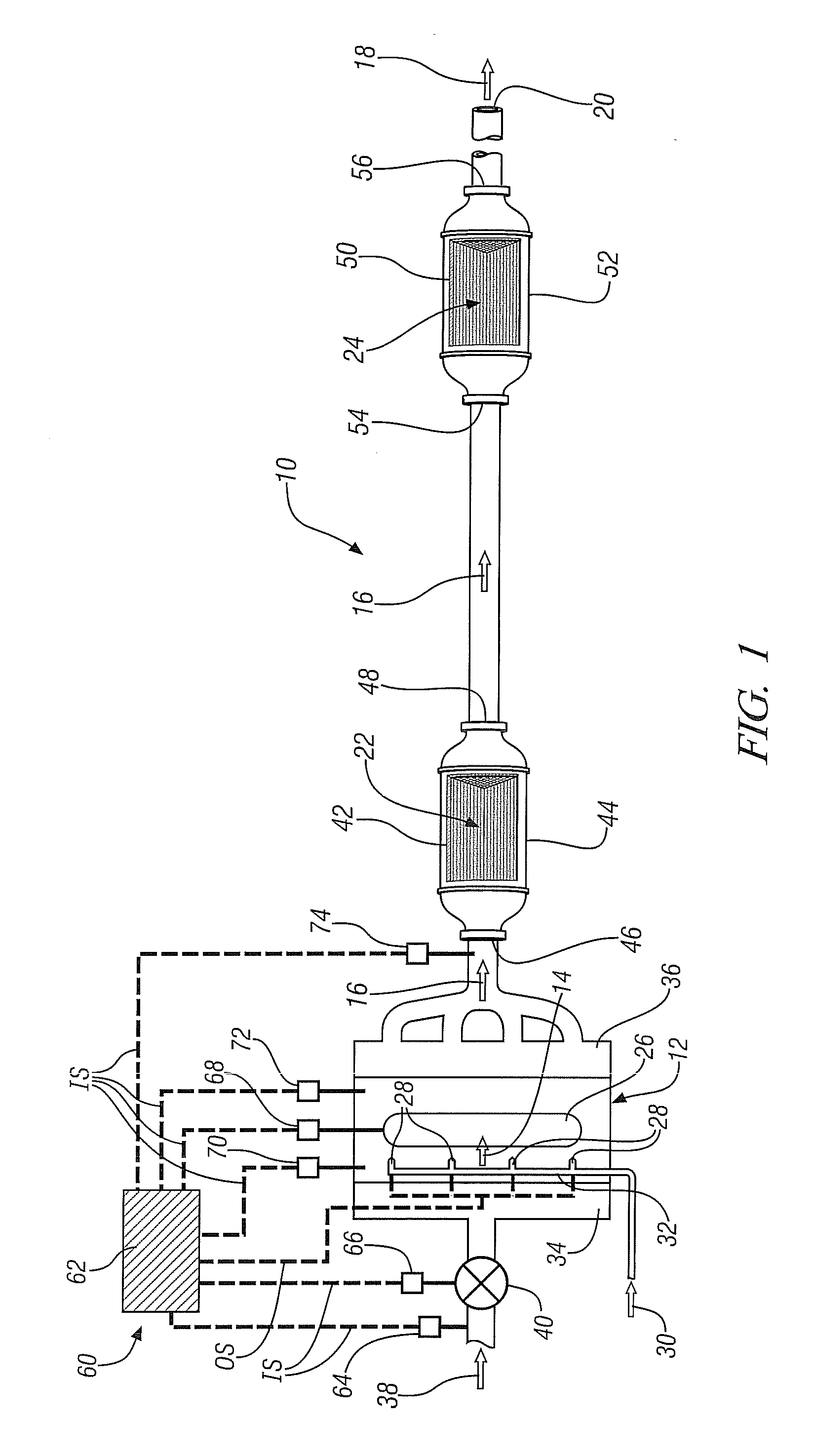Exhaust aftertreatment systems that include an ammonia-scr catalyst promoted with an oxygen storage material
an ammonia-scr catalyst and aftertreatment technology, which is applied in the direction of machines/engines, mechanical equipment, separation processes, etc., can solve the problems of low amount of oxygen present, not great enough to diminish the reductive activity of those compounds, and participate in secondary, so as to enhance the nox conversion activity of the ammonia-scr catalyst, reduce the amount of available reductants, and reduce the effect of nox
- Summary
- Abstract
- Description
- Claims
- Application Information
AI Technical Summary
Benefits of technology
Problems solved by technology
Method used
Image
Examples
examples
[0043]The following Examples demonstrate the enhanced NOX catalytic activity and durability of several ammonia-SCR catalysts that were promoted with oxygen storage materials. The ammonia-SCR catalysts were commercially available and fabricated mainly from base metal ion-substituted zeolites.
[0044]FIGS. 2-7 illustrate the impact the oxygen storage materials had on the NOX conversion activity of the commercially available ammonia-SCR catalysts. The ammonia-SCR catalysts were washcoated, with and without the oxygen storage material, onto monolithic honeycomb core samples and housed within a laboratory reactor configured to flow a variable-composition gas stream, at 350° C., over the catalysts. The variable-composition gas stream consistently contained nitrogen, carbon dioxide, and hydrogen and was alternately supplied with (1) NO and oxygen and (2) ammonia. The alternating supply of NO and oxygen / ammonia, although not necessarily representative of an engine exhaust flow, was nonetheles...
PUM
| Property | Measurement | Unit |
|---|---|---|
| mass ratio | aaaaa | aaaaa |
| mass ratio | aaaaa | aaaaa |
| mass ratio | aaaaa | aaaaa |
Abstract
Description
Claims
Application Information
 Login to View More
Login to View More - R&D
- Intellectual Property
- Life Sciences
- Materials
- Tech Scout
- Unparalleled Data Quality
- Higher Quality Content
- 60% Fewer Hallucinations
Browse by: Latest US Patents, China's latest patents, Technical Efficacy Thesaurus, Application Domain, Technology Topic, Popular Technical Reports.
© 2025 PatSnap. All rights reserved.Legal|Privacy policy|Modern Slavery Act Transparency Statement|Sitemap|About US| Contact US: help@patsnap.com



